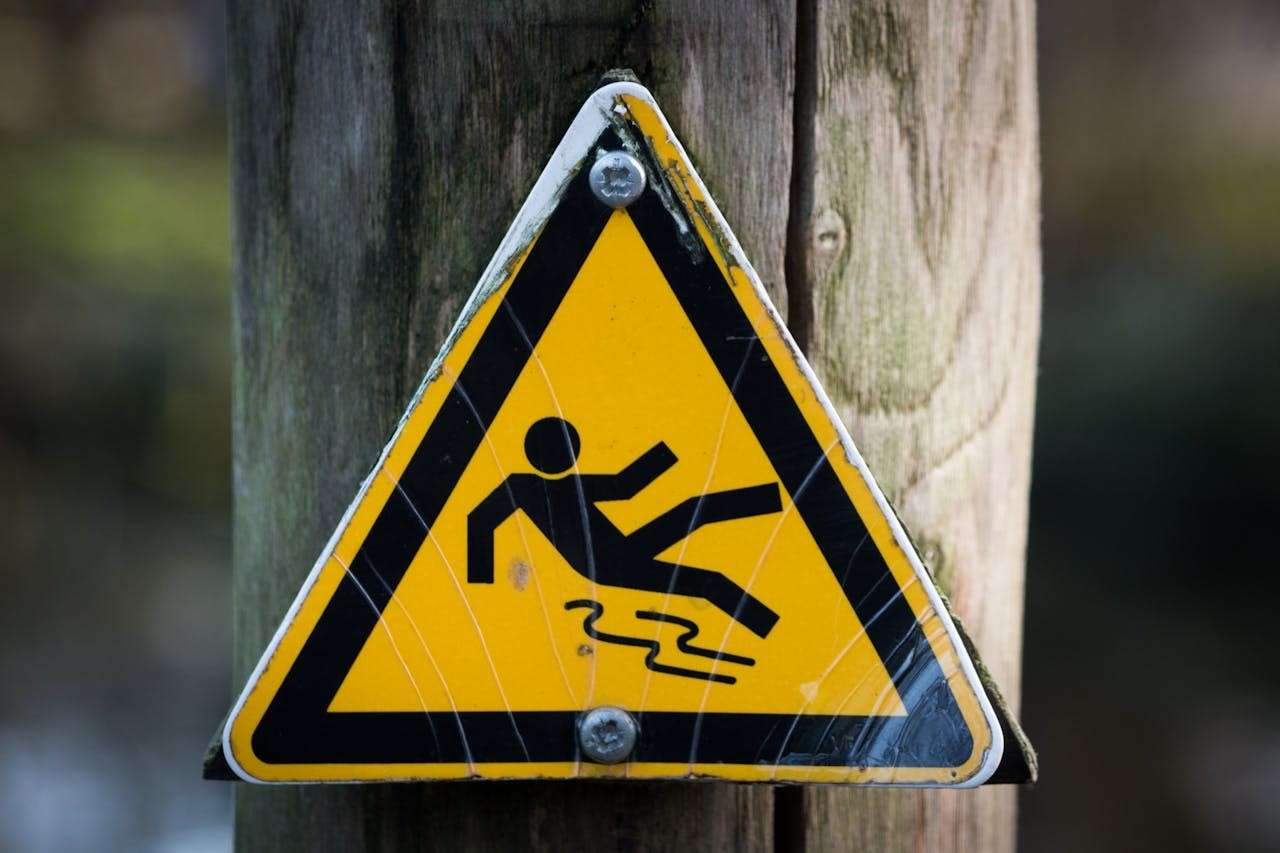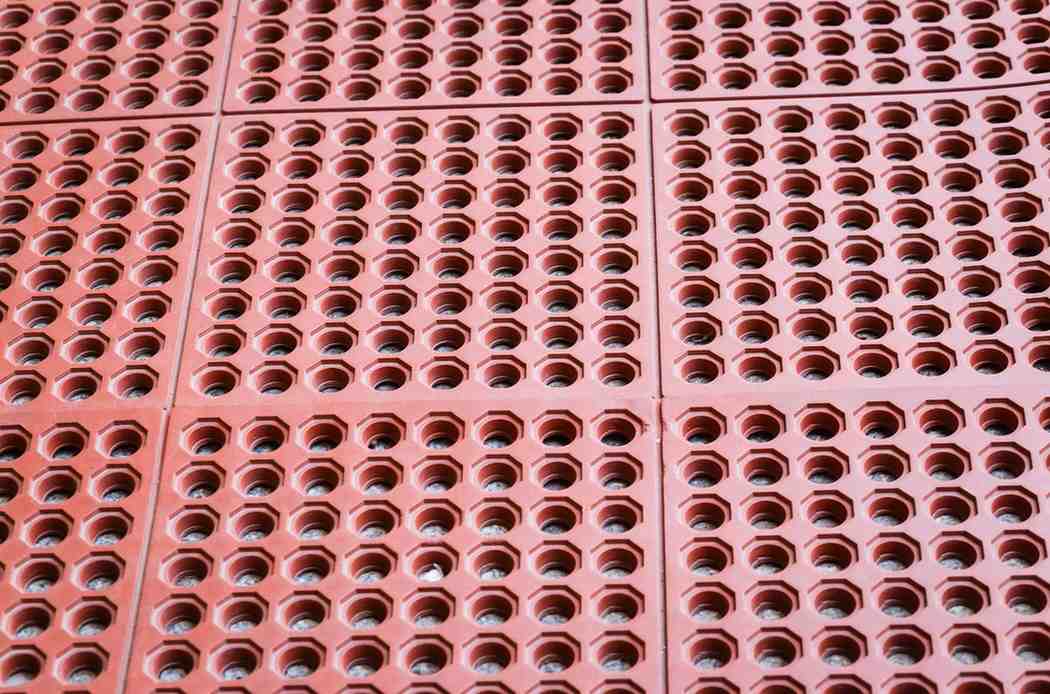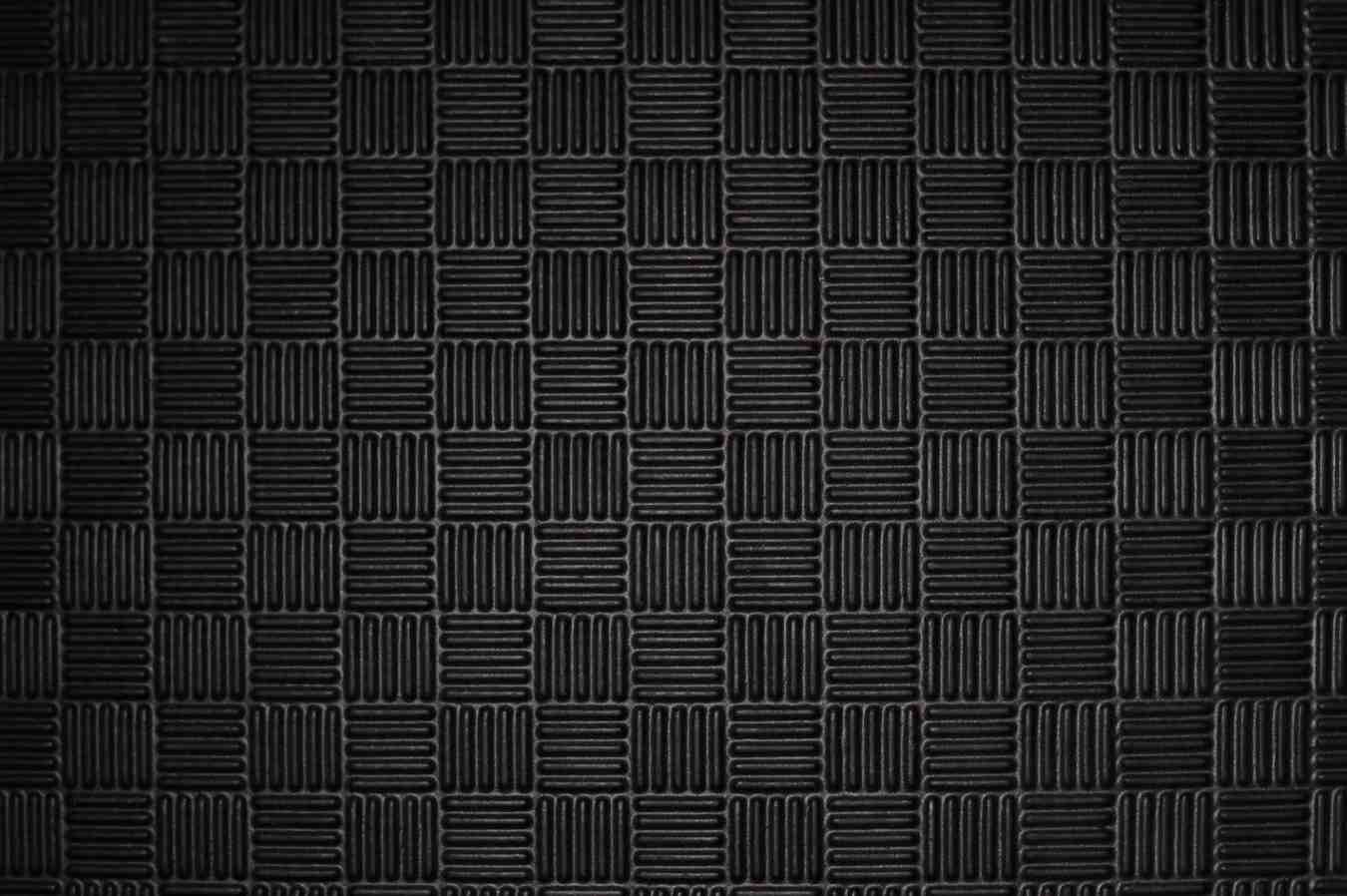Anti slip mats make a big difference in industrial and any business setting. Slips and falls happen–but they don’t have to! This blog post unlocks the secret to preventing these accidents: understanding the Coefficient of Friction (COF) in floor mats. We’ll break down static and dynamic COF, how they impact slip resistance, and how Tehnoguma’s rubber expertise helps you choose the perfect mat for ultimate safety. Get ready to step into a world of confidence–one slip-free step at a time!
Anti slip mats are used in diverse industries such as the mining industry, food production, ergonomics technologies, roller technologies, the automotive industry, and more. Let’s dive into details and see what we can apply to our industry.
Understanding the Coefficient of Friction (COF) for Slip-Resistant Floor Mats
Anti slip mats efficiency is closely dependant on the COF. Think about when you have to move a heavy box across the floor. The Coefficient of Friction (COF) is all about understanding how much friction you need to give it so that you can overcome the resistance between the box and the floor – and then whether it will slide easily or stay stubbornly still. Here we’ll explain why COF matters so much when we talk about slip resistance:
- Coefficient of Friction (COF): What is the Coefficient of Friction (COF)? This is a number (without any units) that tells us how the surfaces in contact with each other are behaving; it’s like a measure of ‘stickiness’. A higher COF means there will be more friction between those two things and that they won’t slide around on top of one another so readily, which also means they could be said to have better grip (or in the case of something like your foot on a floor mat, anti-slip properties).
- Static COF (µs): If you want to make an object start moving from a standstill position, this is the minimum amount of frictional force needed – for example, pushing enough to get that box sliding along rather than simply staying where it is. When we humans walk uphill from cold surfaces indoors out into icy conditions outside, then µs becomes particularly important too! Figures typically range between 0. 30 (least grippy) 1. 00 (most grippy) and test methods exist, set by ASTM International (ASTM), for finding them out on lots of different types of flooring material.
- Dynamic COF (µd): This is the amount of friction needed to keep two surfaces moving against each other at a constant rate (for example: sliding a box across the floor at a steady speed). When we walk, a higher µd is important if we want to feel secure on our feet and not slip. The usual range for this type of COF is just below static values–about 0. 2–0. 8. Tests for µd are set out in standards produced by ASTM such as F461-17.
To choose anti slip mats with good slip resistance for particular uses, it is necessary to know about both static and dynamic COF. The next part will look at factors influencing COF–and with it how safe we can expect to be on a given type of flooring! We also suggest going through our previous publishings on Anti-Fatigue Flooring Mats: Ergonomic Improvement in the Workplace, and Soundproof Flooring Mats: Creating a Quieter Work Environment so you can get a comprehensive representation of the various types of mats in industrial settings and what will best suit your requirements.

Factors Impacting COF and Floor Safety
Choosing an appropriate floor mat is about more than just looks–it’s about safety too. Several factors come into play when looking at how slippery a mat feels (COF) and how well it stops you from sliding about:
- Material Matters: The type of rubber the mat is made from can have a big effect on its COF. For example, natural rubber has a good grip–with a static COF value of between 0. 5 to 0. 7. Nitrile rubber can give even higher grip levels (up to 0. 8), which makes it great for areas where things might get oily. But there’s a catch: some additives or fillers used in rubber mixes can lower COF. That’s why it’s important to choose a reputable manufacturer.
- Surface Texture: How smooth or bumpy the top of the mat is can also make a difference. Raised patterns, grooves, or very rough treads will increase the amount of shoe-to-mat contact. This ups both friction and COF. In simple terms, if you had a diamond-patterned mat its static COF might be 0. 7. If you had a completely smooth mat though, that figure could fall to 0. 4.
- Contaminants: If either your shoes or the mat gets dirty (with water, oil, or anything else) then COF will fall – almost certainly making it less safe to walk on. This is known as contamination. Luckily you can now buy mats and runners which are specially designed for areas where spillages are common. For instance, if you put one of our deep-cleated nitrile rubber mats in a wet area its COF may only drop from 0. 6 to 0. 58; put a different (smooth rubber) mat down instead and the reading could reduce to 0. 2.
- Shoe Soles: What your footwear is made of also counts. Shoes with soft rubber soles tend to have better purchase on textured mats than those with hard plastic ones Nevertheless, it is always advisable to choose the right shoes for the job if you want to be as safe as possible. To decide what type of floor mats will make your workplace safer, you will need to think about these things and how they affect COF.
Don’t forget: even if there is an excellent mat on the floor, wearing the correct footwear and keeping your working area clean will help prevent accidents by reducing slippage risk!

Finding Your Perfect Anti Slip Mats: Choosing the Right COF for Maximum Safety
Now that you have an understanding of COF and its influencing factors, let’s use this information to select the best floor mat for your requirements–with an emphasis on safety!
- Low-Risk Areas (Static COF > 0. 5): Dry environments such as offices or stores where there are few spills. Here, a static COF above 0. 5 will offer good protection against slips. Opt for rubber mats with a subtle texture or pebble design–they often fit the bill nicely.
- Medium Risk Areas (Static COF > 0. 6): Places that might be wet from time to time e.g. kitchens or light industrial floors. For these areas you need a static COF greater than 0. 6; if there is an accident waiting to happen you want all the slip resistance, you can get! Think about mats with deeper channels or ‘nobbly’ patterns like coins or diamonds. If they are made from nitrile rubber even better, this type of compound gives a great grip in wet conditions.
- High-Risk Areas (Static COF > 0. 7): Spillages involving grease plus slopes or inclines: the last thing you need in places like high-tech manufacturing areas or industrial kitchens are accidents of trips slips and falls.
Keep in mind the possibilities of dynamic COF! Yes, static COF is crucial–but don’t get tunnel vision. A high static COF doesn’t automatically mean you’ll have a great grip over time (this is especially true when things get wet). What you want are floor mats offering balanced COF profiles: They should let you start and stop on a dime.
Tehnoguma: Providing Anti Slip Mat Solutions You Can Trust
Workplace safety is our number one priority here at Tehnoguma. This is why we have created a broad range of non-slip floor mats for different risks and uses. Our team of professionals can help guide you to the perfect mat; taking into account factors such as foot traffic levels or types of contaminants present in your workplace environment.
When selecting the best possible COF value or surface texture so that there is an optimal level of slip resistance-we will assess your specific needs like these:
- A thorough assessment of your requirements
- How well do different types of dirt/oils adhere to them
- Whether they need to be resistant against sliding across regularly or just sometimes
Remember, don’t compromise on safety – all our mats comply with rigorous safety standards too! This includes both static coefficients as well dynamic ones—which means they meet some pretty tough criteria for keeping people upright at work (“ASTM” are organizations that set such criteria). And of course, you want durable products for everyday use: meaning its essential features don’t wear off even after lots of long-term service plus making sure any necessary cleaning routine does not affect this ability either.

Optimal Floor Safety – Moving Past COF with a Multi-Layered Defense
When it comes to anti slip mats friction is crucial, but it takes more than that to make sure people don’t slip at work. Here are some tips for making an anti slip mat system that keeps floors extra safe.
- Drainage: If there’s often liquid on your floor, you’ll need good drainage. Choose mats with gaps in their surface or raised edges; this lets the liquid flow away instead of forming puddles–which quickly lowers COF.
- Comfort/Ergonomics: Standing for long periods on hard flooring can be tiring or uncomfortable. Anti-fatigue mats have a cushioned core; using these could mean staff feel more comfortable (and less tired), so pay better attention and perhaps have fewer accidents.
- Chemical Resistance: In areas where floors may come into contact with specific chemicals, special mats are available. Technoguma’s range includes some that resist oil, acid, and alkalis for example.
- Signage/Awareness: Even with excellent matting throughout, it’s important to promote safety awareness generally speaking too. Using appropriate signage informs workers if particular care should be taken because a surface is wet, greasy, etc.; they also need reminding about wearing suitable footwear overall though!
Don’t forget – taking a fully comprehensive approach alongside COF consideration will help prevent most workplace slips/falls creating a safer working environment altogether.
Conclusion
Understand the coefficient of friction, choose the correct anti slip mat, and add more safety. Easily make your workplace safer and more efficient with Tehnoguma. Trusted by businesses like yours for 50 years. Contact our customer support experts and discover more today. Meanwhile, don’t miss publishings from our news section on industrial rubber and get informed of everything timely. Not sure if we cover what you need? Browse our market and service section and see what we can do for you with our more than 50 years of experience and success.



